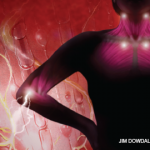Dr. Gentry begins by assessing each patient’s sleep difficulties to decide on the best course of action. By the time they are referred to her practice, most patients, she says, have tried such techniques as sleeping medications and sleep hygiene practices with limited success.
In her practice, Dr. Gentry teaches patients CBT-I techniques that include recognizing and changing behaviors that affect their ability to sleep.
“This could include learning how to control or eliminate negative thoughts and worries that fuel insomnia,” Dr. Gentry says. “CBT-I also teaches patients to develop good sleep habits and avoid behaviors that prevent them from getting a good night’s sleep.”
She notes that the Veterans Administration (VA) Health System has launched an effort to use CBT-I with veterans that has proved effective in treating those with post-traumatic stress syndrome and insomnia.
Ms. Cralle cites a study published in Sleep, February 2015, that found treating veterans who suffer from chronic insomnia with CBT-I therapy also helped with depression.4
Dr. Gentry says the only downside of CBT-I is that it can be hard to find a psychologist outside of a large city with CBT-I experience. She says that some sleep specialists are looking into whether telehealth technology might be able to fill the void and provide remote CBT-I therapy to those with insomnia and chronic pain who live in a remote or rural area.
Last year, the VA also released CBT-I Coach, an iPhone app that users can customize with alerts that signal when it’s time to get ready for bed, when to go to sleep and when to wake up. Although it’s not a substitute for CBT-I therapy, it can be used to complement counseling sessions.
Dr. Gentry says CBT-I techniques go beyond traditional sleep hygiene tips, such as not drinking caffeine before bed and creating a bedtime routine, and include:
- Keeping a sleep diary for two weeks and recording when they go to sleep, when they wake up and how long they were awake during the night—This information can reveal clues to why the patient is having problems sleeping;
- Learning stimulus control—“The goal of stimulus therapy is to break the negative association many patients have about sleep and to help them build a healthy association between bed and sleep,” Dr. Gentry says. “For example, patients may be encouraged to get out of bed if they aren’t sleepy and to not use their bed for activities like watching TV”; and
- Sleep restriction therapy—Using this technique, patients are encouraged to reduce their time spent in bed. Because many chronic pain patients spend a large amount of time in bed, time spent in bed is reduced, leading to increased sleep deprivation. Ultimately, patients begin spending a higher proportion of their time in bed actually asleep.
“Sleep restriction therapy improves the homeostatic sleep drive and moves bedtime closer to the normal circadian sleep phase,” Ms. Cralle says. “This increases deep (N3) sleep and decreases the number and duration of awakenings. Once sleep improves, the amount of sleep time can be slowly increased, adding about one and a half to two hours of good-quality sleep.”


